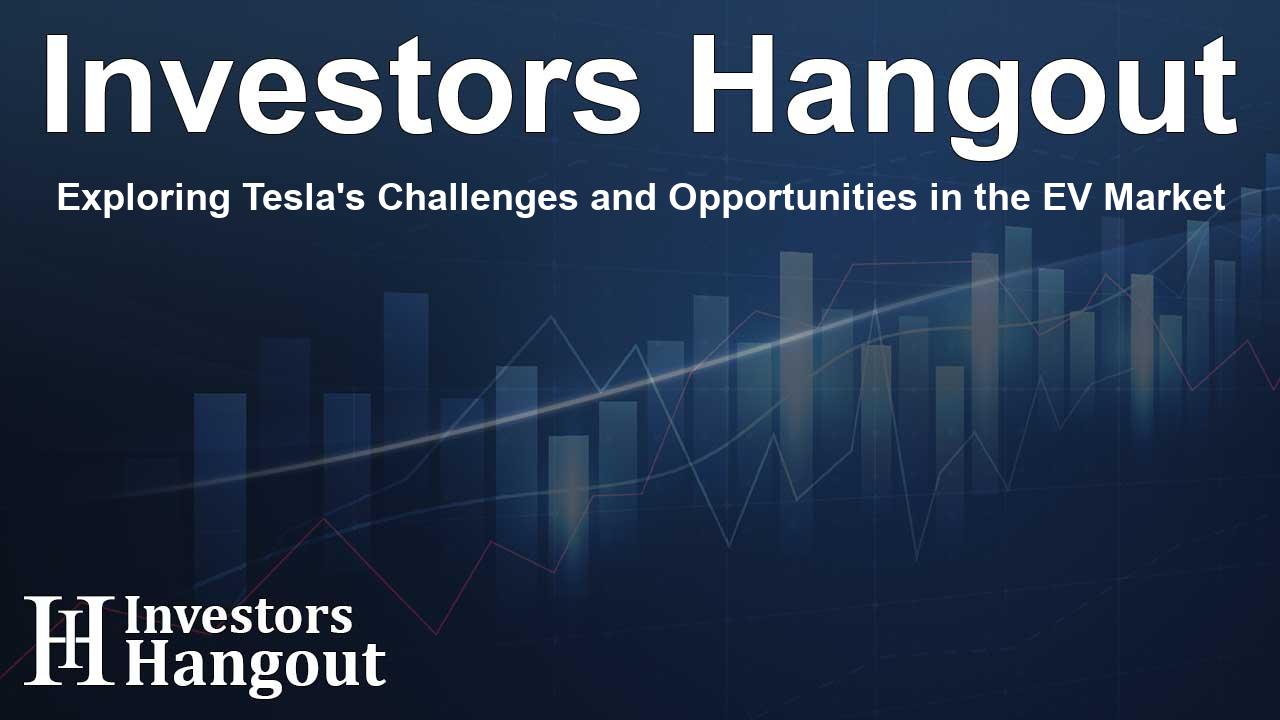Exploring Tesla's Challenges and Opportunities in the EV Market

Tesla's Current Landscape: A Detailed Analysis
Tesla Inc. (NASDAQ: TSLA), a leader in electric vehicles and clean energy, is currently navigating a pivotal moment. As the company strives to maintain growth amidst competition and innovation, recent reports highlight both promising opportunities and vital challenges that could affect its trajectory.
Performance Insights and Delivery Projections
Tesla's recent performance revealed that the company delivered approximately 463,000 vehicles in the latest quarter, reflecting a 6% increase from the prior year. While this figure surpassed some expectations, many analysts anticipated stronger results. Such modest growth raises concerns regarding Tesla's ability to uphold its ambitious expansion plans.
For the entirety of the year, analysts have provided a broad range of delivery expectations, estimating between 1.66 million and 1.8 million units. Understanding how well Tesla can meet these targets will be critical in sustaining investor confidence amidst evolving market dynamics.
Strategic Product Development
The future of Tesla heavily relies on launching innovative products and penetrating new markets. Key initiatives include:
Cybertruck Launch
The highly awaited Cybertruck is on the cusp of production after several delays. Its distinctive design has garnered significant attention, although the company must prove it can scale production and gain market acceptance.
Affordable Vehicle Introduction
Looking ahead to 2025, Tesla aims to debut new budget-friendly models to drive sales volume and reach a broader demographic. However, concerns about maintaining profit margins while venturing into this segment persist, as analysts speculate about the impact on Tesla’s brand prestige.
Robotaxi Aspirations
Tesla's foray into autonomous ride-sharing represents one of its most ambitious goals. Plans are in motion to set up limited robotaxi operations in select markets by 2025, with existing vehicle models utilizing Full Self-Driving technology. The company has also teased a futuristic robotaxi concept for anticipated production in 2026. This venture could substantially influence Tesla's valuation, depending on success in navigating the complexities of regulatory and logistical hurdles.
Financial Considerations
Scrutiny of Tesla's financials is increasing, especially as it faces margin pressures caused by price adjustments and an influx of competitors. Although earnings per share (EPS) predictions for 2024 suggest a possible decline before a recovery in 2025, variance in EPS expectations highlights a substantial degree of uncertainty in Tesla's profit potential.
Maintaining robust gross margins—historically one of Tesla's strengths—could prove challenging with the introduction of less expensive vehicles. Investors will closely monitor how effectively Tesla can balance profitability with market expansion.
Navigating Competitive Pressures
Tesla's leading position in the EV sector faces increasing competition from both established manufacturers and emerging players. Companies like BYD have carved out significant market share in crucial areas, while traditional automakers are enhancing their electric offerings, shaking Tesla’s early advantages.
To thrive amid this competitive terrain, Tesla must not only uphold its technological edge but also preserve its brand allure.
Diving into Tesla's Energy Sector
Amid all the focus on automotive advancements, Tesla’s energy generation and storage business is witnessing rapid growth. Analysts anticipate that annual energy storage deployments could potentially surpass previous figures, providing a vital revenue source that diversifies Tesla's overall business model.
Evaluating Risks and Opportunities
Can Tesla Retain Its Premium Position?
As Tesla prepares to roll out more economical vehicle options in 2025, it raises questions about brand integrity and profit margins. The challenge lies in balancing cost efficiencies with the premium quality that has defined the Tesla experience. If the company missteps in this transition, it could harm its brand appeal and overall financial health.
Will Regulations Impair Tesla's Ambitious Plans?
The pursuit of autonomous vehicles and robotaxis is fraught with regulatory uncertainties. Tesla's emphasis on a camera-centric approach to self-driving tech is viewed with skepticism by some watchdogs, heightening the complexity of securing needed approvals. Extended delays in regulatory clearances may thwart Tesla’s rollout timelines and undermine investor confidence.
Potential Opportunities for Revenue Expansion
How Can Tesla Monetize Its FSD Technology?
Tesla's advancements in Full Self-Driving technology position it for potential revenue through licensing arrangements with other manufacturers. With extensive data derived from real-world driving, Tesla’s FSD could attract significant interest, providing a profitable revenue avenue beyond vehicle sales.
Long-Term Profitability in Energy Solutions
Beyond automotive ventures, Tesla's energies around storage and solar offer remarkable long-term profitability prospects. The shift towards renewable energy sources indicates burgeoning demand for such technologies, creating an optimistic outlook for Tesla’s energy solutions division.
SWOT Overview
Analyzing Tesla's landscape through a SWOT lens reveals multifaceted dynamics: Strengths include robust brand loyalty, cutting-edge technology, and a comprehensive charging network. Conversely, weaknesses point to production challenges and a reliance on Musk's leadership.
Opportunities beckon in mass-market EVs and global expansion, while threats loom from intensified competition and potential economic downturns affecting consumer demand.
Market Sentiment and Analyst Projections
The disparity in analyst price targets, spanning from $120 to $310, underscores the prevailing uncertainties surrounding Tesla's projections. Observing how well Tesla can adjust to market demands, successfully innovate, and enhance its autonomous driving initiatives will be critical for stakeholders.
Frequently Asked Questions
What challenges is Tesla facing in its growth?
Tesla is encountering competition, regulatory hurdles, and potential declines in profit margins due to its focus on lower-cost models.
How does Tesla's performance influence investor confidence?
Consistent performance, particularly meeting delivery targets, significantly bolsters investor confidence in Tesla's strategies.
What is the potential of Tesla's energy sector?
The energy generation and storage division holds substantial growth potential as demand for renewable energy solutions rises.
How does competition affect Tesla?
Increased competition from other EV manufacturers can create challenges for Tesla regarding market share and pricing strategies.
What is Tesla's future outlook?
While facing hurdles, Tesla's innovation in autonomous technology and energy solutions could pave the way for promising opportunities ahead.
About The Author
Contact Dominic Sanders privately here. Or send an email with ATTN: Dominic Sanders as the subject to contact@investorshangout.com.
About Investors Hangout
Investors Hangout is a leading online stock forum for financial discussion and learning, offering a wide range of free tools and resources. It draws in traders of all levels, who exchange market knowledge, investigate trading tactics, and keep an eye on industry developments in real time. Featuring financial articles, stock message boards, quotes, charts, company profiles, and live news updates. Through cooperative learning and a wealth of informational resources, it helps users from novices creating their first portfolios to experts honing their techniques. Join Investors Hangout today: https://investorshangout.com/
The content of this article is based on factual, publicly available information and does not represent legal, financial, or investment advice. Investors Hangout does not offer financial advice, and the author is not a licensed financial advisor. Consult a qualified advisor before making any financial or investment decisions based on this article. This article should not be considered advice to purchase, sell, or hold any securities or other investments. If any of the material provided here is inaccurate, please contact us for corrections.
